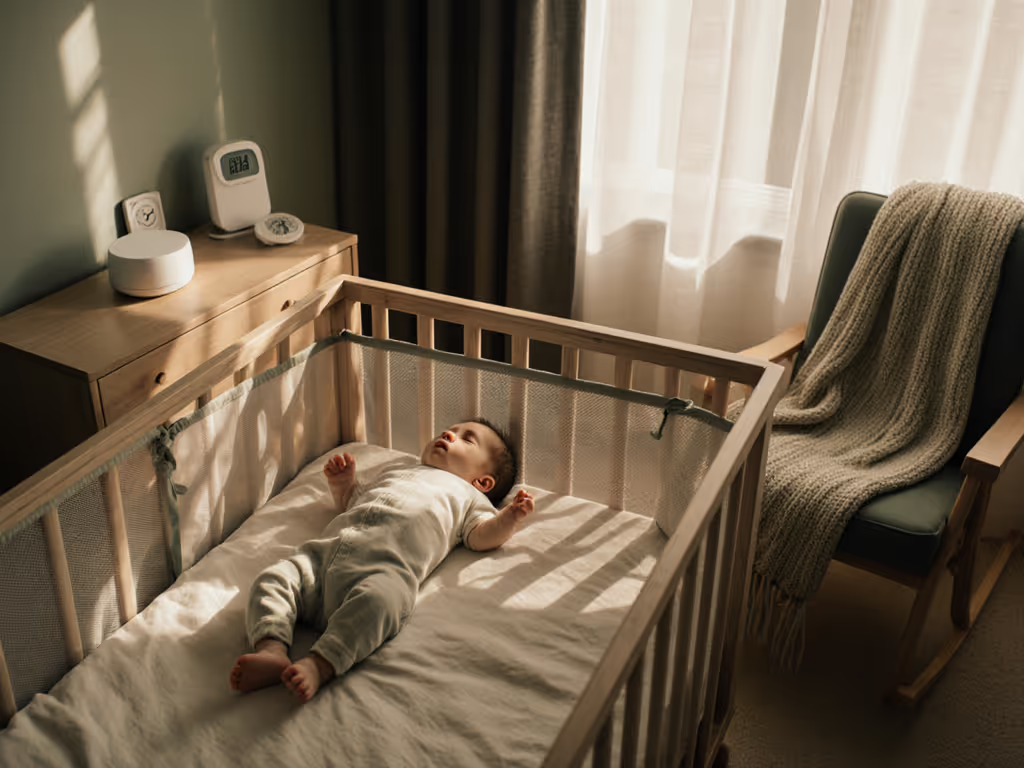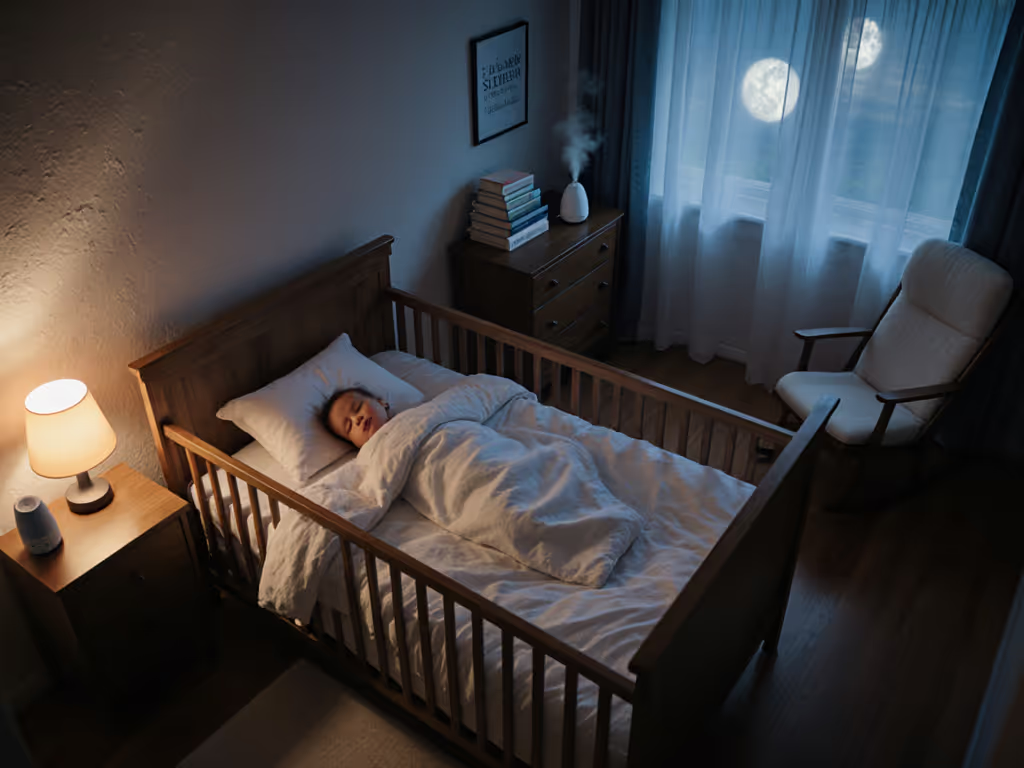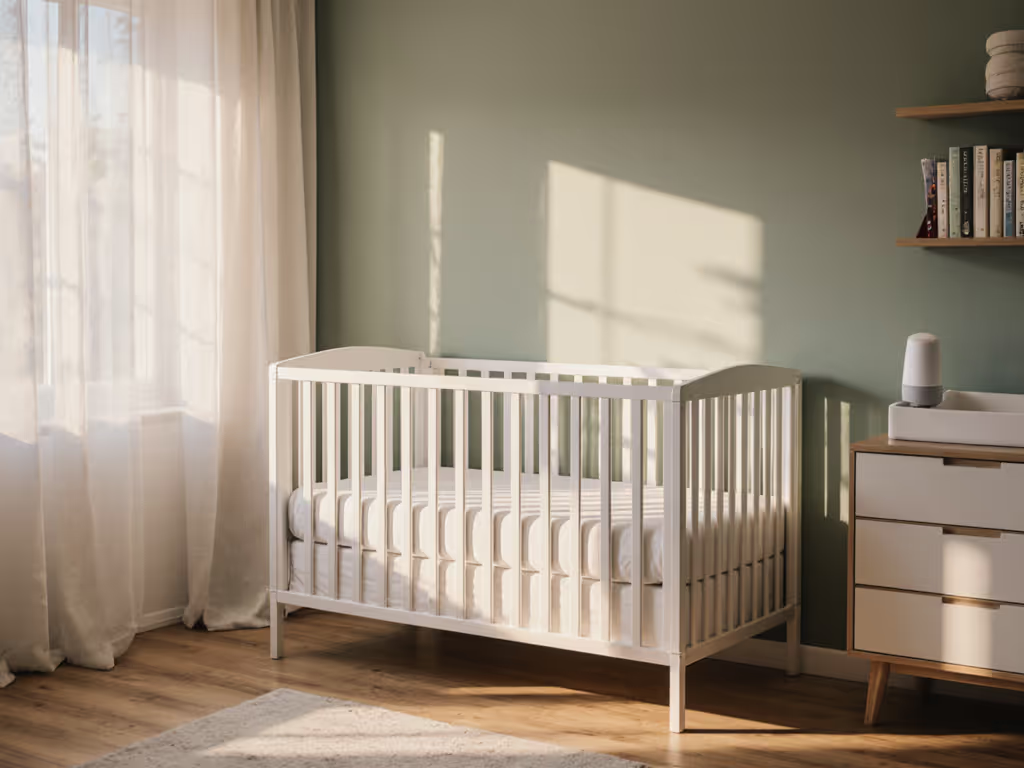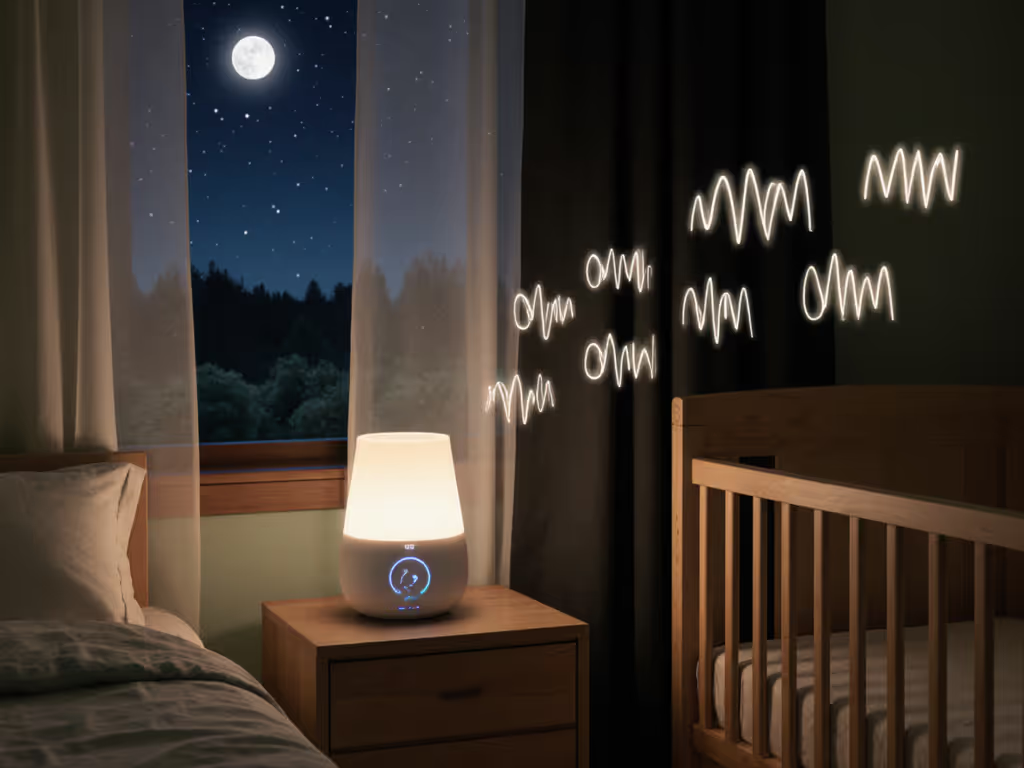
Infant Sleep Sound Step by Step: Sleep-Optimized Results
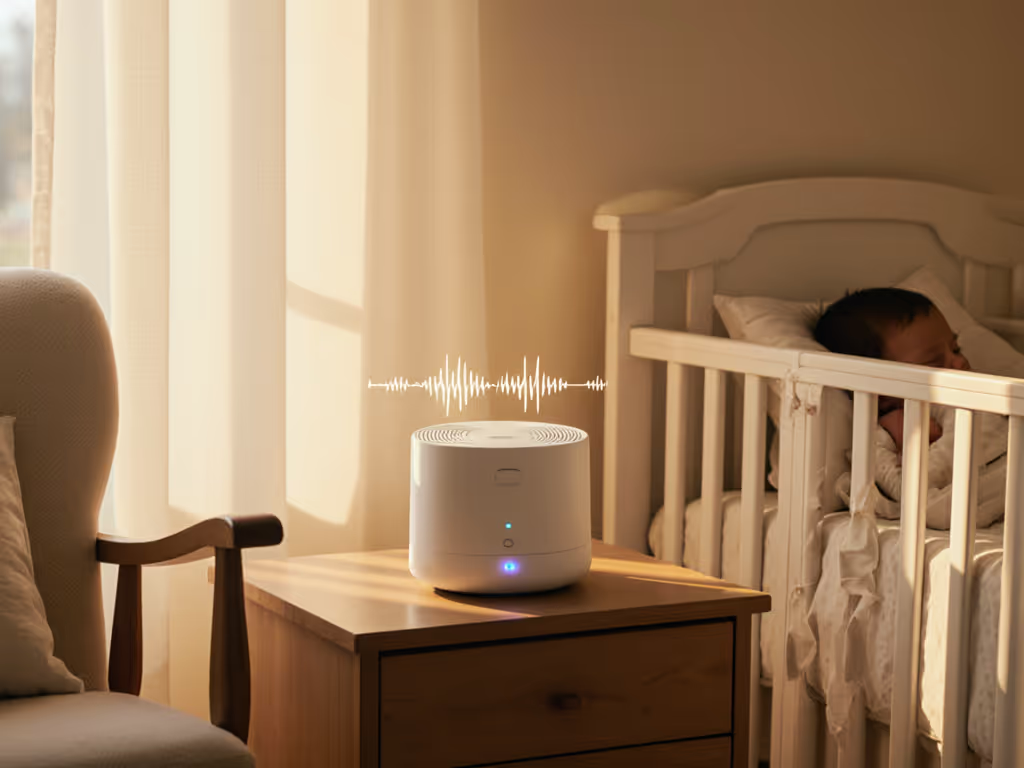
Did you know that sudden noise spikes above 70 decibels can startle and wake a sleeping infant? A quiet and carefully managed sleep space gives your baby a better chance at peaceful rest and healthy development. The latest research highlights the powerful link between sound environments and infant sleep patterns. By understanding and fine tuning your baby's surroundings, you can support safe, consistent sleep that benefits the whole family.
Quick Summary
| Key Point | Explanation |
|---|---|
| 1. Assess your infant's sleep environment | Evaluate the room layout for noise sources that may disturb your baby's sleep. |
| 2. Maintain optimal sound levels | Keep sound between 50 to 65 decibels, akin to a quiet conversation, to avoid overstimulation. |
| 3. Use effective sound profiles | Opt for pink or brown noise for soothing sleep sounds that mask disruptions without harshness. |
| 4. Monitor your infant's sleep responses | Track sleep patterns and make gradual adjustments to sound settings based on your baby's reactions. |
| 5. Conduct regular sound level checks | Utilize decibel meters to verify sound levels remain safe and consistent, adjusting as necessary. |
Step 1: Assess Your Infant's Sleep Space
Your infant's sleep environment plays a critical role in promoting safe and restful sleep. In this step, you will systematically evaluate the sleep space to create an optimal acoustic and physical setting that supports your baby's health and comfort.
Start by conducting a comprehensive room scan. Examine the physical layout carefully, paying special attention to potential sound sources and environmental disruptions. Look for objects near the crib that could generate unexpected noises like air conditioning units, squeaky floor boards, or exterior street sounds. Sound machines or white noise generators should be positioned at least 3 feet away from your infant's sleeping area to prevent direct sound exposure.
Measure the ambient noise levels using a decibel meter or smartphone app. Ideal sleep environments maintain sound levels between 40 to 50 decibels roughly equivalent to a quiet library or soft rainfall. Sudden noise spikes above 70 decibels can startle and disrupt your infant's sleep patterns.
Pro Tip: Use acoustic dampening techniques like heavy curtains or sound absorbing wall panels to minimize external noise variations.
Check room temperature and humidity levels. Babies sleep best in environments between 68 to 72 degrees Fahrenheit with humidity around 50%. Extreme temperatures or humidity can cause discomfort and interrupt sleep cycles.
The next step involves selecting appropriate sound management strategies to create a consistent and soothing sleep atmosphere for your little one. Understanding your specific room dynamics will help you make informed decisions about sound machine placement and noise control.
Step 2: Select the Optimal Sleep Sound Profile
Designing the perfect acoustic environment for your infant requires strategic sound selection that promotes restful sleep while maintaining safety.
Here's a comparison of common sleep sound profiles for infants:
| Sound Profile | Acoustic Qualities | Pros | Cons |
|---|---|---|---|
| Pink Noise | Soft, balanced frequencies | Natural sound<br>Masks disruptions | Fewer machine options |
| Brown Noise | Deeper, low-frequency | Soothing for many infants<br>Less harsh | May not suit all babies |
| White Noise | Even spectrum<br>High-pitched | Widely available<br>Masks sudden noise | Can feel harsh<br>Less natural |
| Your goal is to create a consistent and soothing sound profile that supports natural sleep cycles and minimizes disruptive noise variations. |
Recent research from advanced neonatal monitoring studies highlights the critical importance of precise sound measurement. As demonstrated in a groundbreaking study using multi-modal wearable devices, audio data plays a significant role in understanding infant sleep patterns. This means you need to be intentional about the type and intensity of sounds surrounding your baby.
Begin by understanding different sound frequencies and their impact. Pink noise and brown noise emerge as superior options for infant sleep environments. These sound profiles provide smooth, consistent acoustic landscapes that mask environmental disruptions without creating jarring audio transitions. Unlike white noise which can feel harsh, pink and brown noise offer more natural sound spectrums that mimic gentle environmental backgrounds.
Pro Tip: Always maintain sound levels between 50 to 65 decibels roughly equivalent to a quiet conversation to prevent overstimulation.
Carefully evaluate sound machine settings. Opt for devices with adjustable frequency ranges and volume controls. Position the sound source at least 3 feet from the crib to ensure even sound distribution without direct acoustic intensity. Some advanced sound machines offer specialized infant sleep modes with scientifically calibrated sound profiles.
Drawing insights from neonatal soundscape research, remember that bed positioning and room layout significantly influence sound exposure. Monitor your infant's response to different sound profiles and be prepared to make subtle adjustments based on their individual comfort and sleep patterns.
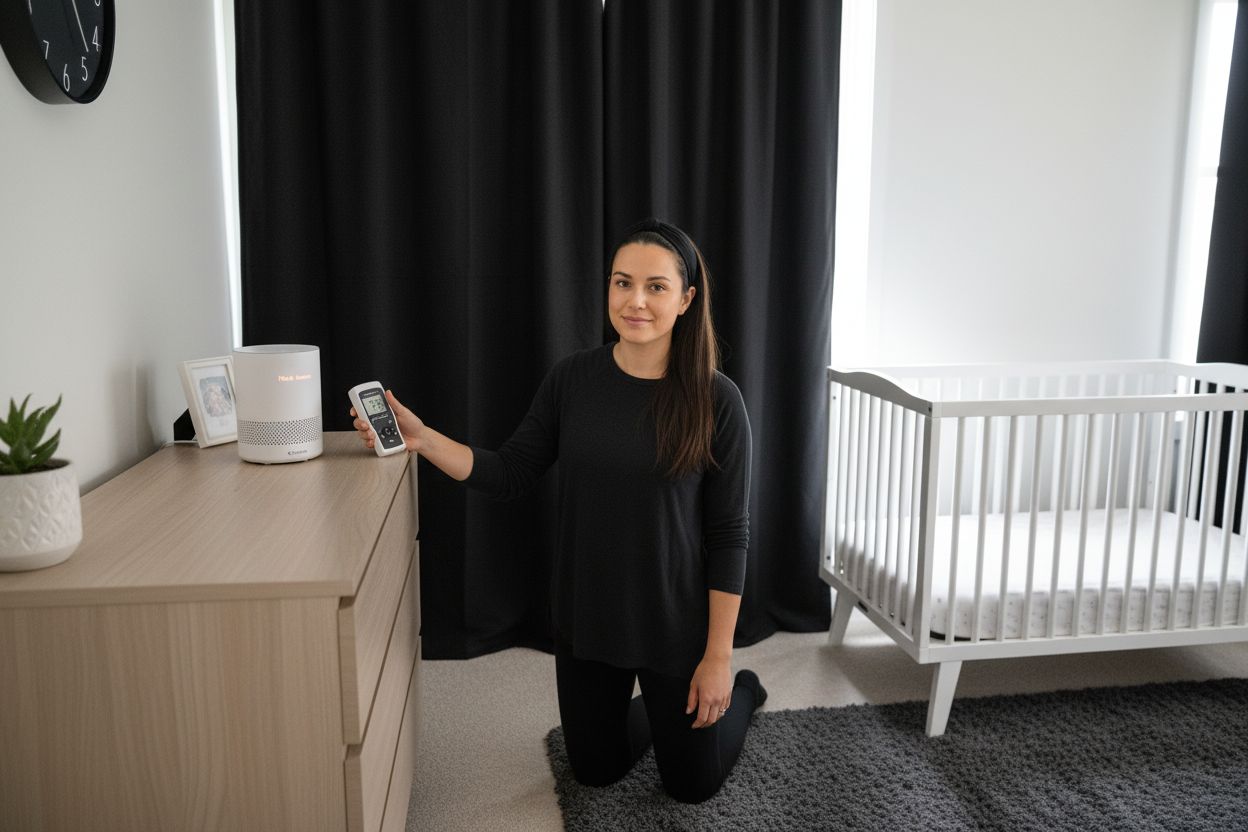
Your next step will involve implementing these sound strategies and observing how your infant responds to the newly optimized sleep environment.
Step 3: Set Up and Calibrate the Sound Source
Precise sound source setup represents a critical milestone in creating an optimal infant sleep environment. Your objective is to strategically position and configure sound equipment to deliver consistent acoustic support that promotes uninterrupted rest.
Modern research demonstrates the intricate relationship between sound monitoring and infant sleep quality. Advanced multi-modal studies utilizing wearable devices with audio collection capabilities have revealed the nuanced impact of precise sound calibration. This means your setup requires meticulous attention to detail and systematic configuration.
Begin by selecting an appropriate sound machine with adjustable frequency ranges and digital controls. Position the device at least 3 feet from the crib to ensure balanced sound distribution. Angle the speaker slightly away from the infant to prevent direct sound projection. Utilize devices with built-in decibel monitoring capabilities to maintain sound levels between 50 to 65 decibels.
Pro Tip: Use smartphone sound meter applications to validate and fine tune your sound machine's actual output levels in real time.
Carefully experiment with different sound profiles pink noise and brown noise emerge as particularly effective options. Start at lower volume settings and gradually increase to find the most comfortable acoustic environment for your infant. Some advanced sound machines offer adaptive sound technologies that automatically adjust based on ambient room conditions.
Drawing insights from cutting-edge infant monitoring research, consider implementing periodic sound profile adjustments. Infant sleep environments are dynamic systems requiring continuous refinement. Monitor your baby's responses and be prepared to make subtle modifications to maintain optimal acoustic conditions.
Your next step involves integrating these precise sound calibration strategies and establishing a consistent sleep soundscape that supports your infant's natural sleep cycles.
Step 4: Monitor Sleep Response and Adjust Settings
Continuous monitoring and adaptive adjustment form the cornerstone of creating an optimal infant sleep environment. Your mission is to develop a systematic approach for observing and responding to your infant's unique sleep patterns and acoustic preferences.
Recent advancements in infant sleep research highlight the dynamic nature of sleep environments. Multi-modal wearable devices collecting audio, ECG, and movement data have revolutionized our understanding of infant sleep responses. This scientific approach transforms sleep monitoring from a passive to an active intervention strategy.
Begin by establishing a comprehensive observation protocol. Track key indicators such as sleep duration, frequency of wake ups, and overall restlessness. Pay attention to your infant's physiological and behavioral cues. Subtle changes in breathing patterns, muscle tension, or vocalization can signal the need for sound profile adjustments.
Pro Tip: Use a sleep tracking journal to document daily variations and identify emerging patterns in your infant's sleep responses.
Implement a gradual adjustment strategy. Small incremental changes to sound frequency, volume, or positioning can yield significant improvements. Utilize sound machines with adaptive technologies that can automatically respond to room conditions. Some advanced devices offer machine learning capabilities that learn and optimize sound profiles based on your infant's specific sleep characteristics.
Drawing from cutting-edge research on infant pose estimation and sleep monitoring, remember that sleep environments are not static but continuously evolving systems. What works perfectly one week might require subtle refinement the next. Stay flexible and attentive to your infant's changing needs.
Your next step involves integrating these monitoring insights to create a personalized and responsive sleep support system that grows with your infant.
Step 5: Verify Safe and Consistent Sound Levels
Ensuring precise and safe sound levels represents the final critical checkpoint in creating an optimal infant sleep environment. Your goal is to develop a rigorous verification process that guarantees acoustic conditions remain within scientifically recommended safety parameters.
Cutting edge research in neonatal soundscape monitoring reveals the profound importance of accurate sound measurement. Pioneering studies demonstrate that microphone placement and measurement techniques can significantly impact our understanding of actual sound exposure. This means you need a systematic approach to verifying sound levels exactly as your infant experiences them.
Utilize professional grade sound measurement tools like calibrated decibel meters or advanced smartphone applications designed for acoustic analysis. Position measurement devices at ear level and multiple locations around the crib to capture comprehensive sound profile data. Focus on maintaining sound levels consistently between 50 to 65 decibels roughly equivalent to a quiet conversation or gentle rainfall.
Pro Tip: Conduct sound measurements at different times of day to account for potential environmental noise variations that might impact acoustic consistency.
Implement periodic sound profile audits. Randomly check sound machine output using digital measurement tools to confirm that volume remains within safe ranges. Some advanced sound machines offer built-in volume monitoring features that provide real time acoustic feedback and automatic adjustments.
Drawing insights from multi-modal infant monitoring research, remember that sound verification is not a one time task but an ongoing process. Infant sleep environments are dynamic systems requiring continuous attention and refinement. Stay proactive and responsive to subtle changes in your infant's acoustic environment.
Your journey of creating a perfectly calibrated sleep soundscape is now complete, equipped with scientific precision and attentive care.
Enhance Your Infant's Sleep with Precision Sound Solutions
Creating the perfect sleep environment for your infant can feel overwhelming when you consider every detail from sound profiles to decibel calibration. This article highlights the critical challenge parents face in managing safe and consistent sound levels, understanding pink and brown noise benefits, and carefully monitoring auditory responses to support restful sleep. Your goal is clear: to build a scientifically backed sleep soundscape that nurtures your little one’s comfort without overstimulation.
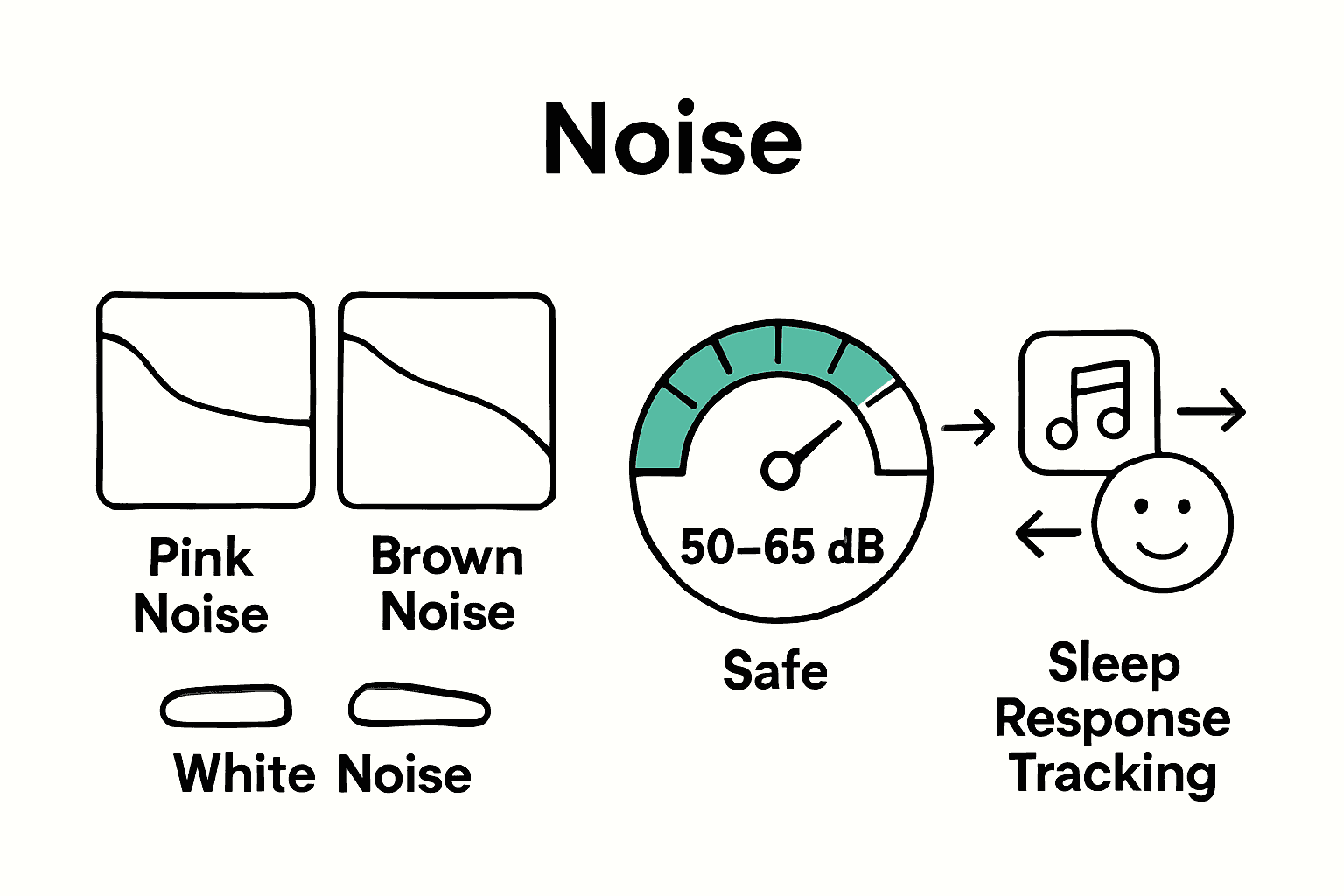
If you want to move beyond guesswork and create a tailored acoustic environment founded on real data and expert lab measurements, explore how our Acoustic Lab for Little Ears offers powerful tools and guides. Our data-driven approach blends lab-measured decibel profiles with home-tested solutions to fit your unique room and infant needs. Discover practical recommendations on sound machine selection, volume calibration, and positioning by visiting our main page today. Take control of your infant’s sleep quality now and transform restless nights into peaceful rest backed by science.
Frequently Asked Questions
How can I assess my infant's sleep space for optimal sound?
To assess your infant's sleep space, start by scanning the room for potential noise sources like air conditioning units or squeaky floors. Measure the ambient noise levels with a decibel meter, aiming for sound levels between 40 to 50 decibels to create a calming environment.
What type of sound profile is best for my infant's sleep?
Pink and brown noise are recommended sound profiles for promoting restful sleep in infants. Experiment with both types at sound levels between 50 to 65 decibels to find which one soothes your baby best and creates a comfortable sleep setting.
How should I set up and calibrate the sound machine for my infant?
Position the sound machine at least 3 feet away from the crib and angle the speaker away from your baby to ensure balanced sound. Use adjustable volume and frequency settings, starting at lower volumes and gradually increasing to find the optimal acoustic environment for your infant.
What should I monitor to adjust my infant's sleep sound settings?
Track your infant's sleep duration, frequency of wake-ups, and any signs of restlessness to identify optimal sound settings. Use a sleep tracking journal to document these patterns and make gradual adjustments as needed, focusing on small changes in sound profile or volume.
How do I ensure safe sound levels in my infant's sleep environment?
To ensure safe sound levels, use a sound measurement tool to verify decibel levels, maintaining them between 50 to 65 decibels. Conduct periodic checks at different times of day and make adjustments to the sound machine as needed to maintain a consistently calming acoustic environment.

